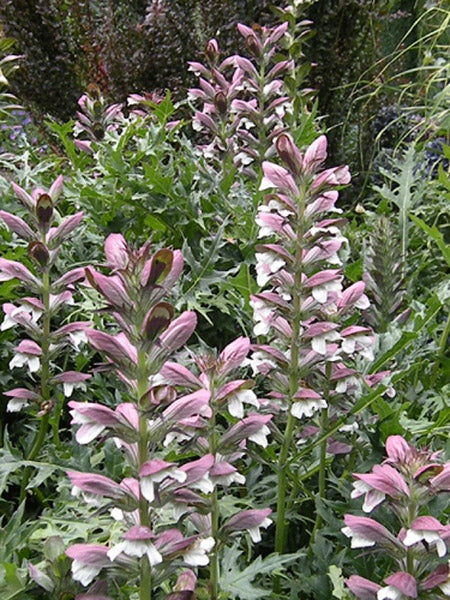Acanthus (Acanthus mollis)
Acanthus Plant Features
Do you ever wonder what inspired Greek and Roman architects to build such amazing structures? Well look no further than acanthus. This spectacular perennial (sometimes called bear's breeches) has inspired architects and gardeners for centuries with its lustrous, dark green, deeply cut leaves that were modeled on columns and building facades. In addition to its gorgeous foliage, acanthus sends up spikes of purple and white flowers in late spring and early summer. It's a classic beauty that looks terrific in modern settings. The blooms can also be cut for fresh bouquets. Acanthus is hardy from zones 6-10.Acanthus Questions?
We love to chat with other perennial gardeners! Email us your questions and one of our experts will contact you.
Acanthus Growing Instructions
Acanthus does best in full or partial shade and moist, well-drained soil. In areas with very dry soil, partial shade is better for the plant -- but if acanthus grows in too much shade, it won't bloom well. When happy, it can spread quickly, growing 5 feet tall and 3 feet wide, so be sure to plant it where it has room to spread. It makes an excellent choice for the back of the flower border or in a mass by itself. Acanthus leaves and stems are somewhat spiny so take care handling the plant. Once established, acanthus may spread through the garden. To avoid problems, plant acanthus where the roots will be contained by a garden pathway or drive.Note: Acanthus is not intended for human or animal consumption.
-
Water
Moist
-
Light
Outside: Part sun
Outside: Shade
-
Colors
Green
Purple
White
-
Special Features
Deer/rabbit resistant
Complement your Acanthus
Lobelia, PerennialThe bright red flowers of Perennial Lobelia are a startling contrast to Acanthus.
Astilbe
Plant Astilbe near your Acanthus for an extra dose of color.
Hosta
Large-leaved Hosta looks great teamed with Acanthus.

